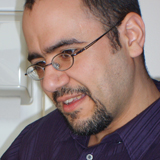 Mechanisms to reduce patient demand and workload for GPs have had limited success, as GPs are increasingly the “risk sink” that work gets dumped on. As well as contributing to burnout and subsequent problems with GP retention, workload is likely to increasingly affect patient safety. This is based on the reasonable assumption that the number of patients seen and the number of decisions made by a GP affects their subsequent ability to make effective decisions later that day (known as decision fatigue). The shiny needle of cancer symptoms is not so obvious in a massive haystack, especially when you are rubbing bleary eyes.
Mechanisms to reduce patient demand and workload for GPs have had limited success, as GPs are increasingly the “risk sink” that work gets dumped on. As well as contributing to burnout and subsequent problems with GP retention, workload is likely to increasingly affect patient safety. This is based on the reasonable assumption that the number of patients seen and the number of decisions made by a GP affects their subsequent ability to make effective decisions later that day (known as decision fatigue). The shiny needle of cancer symptoms is not so obvious in a massive haystack, especially when you are rubbing bleary eyes.
I would argue that any given doctor can safely make a definable, finite number of decisions in any given day—especially if one could factor in the complexity of each decision as well. If such a number was to be defined for UK general practitioners, it would instantly set a workload limit.
I assume that my medical indemnity organisation would find it very easy to vastly increase the cost for me to see patients beyond that limit. I wonder if I would have to design a disclaimer for patients who insisted on being seen, declaring that I am operating beyond my designated safe limit and they are seeing me at their own risk? Or medical defence organisations could simply refuse to indemnify me at all beyond the threshold, and GPs would have to set up clandestine, underground workflow management schemes if they wished to exceed this limit. Would there be a rise in backstreet uninsured general practice?
It seems to me that we have already reached the point at which there is just not enough money to pay enough GPs so that we are all seeing a safe number of patients. GPs should be able to work in a way that is both safe and timely for patients. Without sufficient resource, it can’t be both. Limiting the number of patients we see may make the work we do safer, but it diametrically opposes the ridiculous access agenda being pursued by NHS England.
The unlikely solution that could help us achieve seeing a defined safe number of patients is massive investment coupled with improved recruitment and retention of the GP workforce. As this simply won’t happen, alternatives have to be considered, such as attempts to divert patients to being seen by non-doctors in primary care—by nurses, physician associates, paramedics, pharmacists, and computer algorithms. That or we simply use the following answerphone message, as we pull down the shutters:
“Sorry our GPs have reached their safety limit for the day, please call back tomorrow, unless it is urgent, in which case you can either go to A+E or the walk-in centre, as long as they haven’t breached their safety limits either. Perhaps you could use the ‘Find a safe doctor’ app to Skype someone, somewhere in the United Kingdom, who hasn’t breached. Have a nice day.”
The head in the sand approach is to refuse to accept that decision fatigue affects GPs and patient care and to carry on as we are. Yet fatigue and burnout are not a valid defence in front of the coroner or the General Medical Council (GMC).
Unfortunately, just carrying on is the most likely path that we’ll be dragged along, resulting in inevitable mistakes, litigation, burnout, and an ongoing depressing spiral into further recruitment and retention issues.
However, there is a faint glimmer of hope. The future could really be in our hands. It would only take a call to my medical indemnity organisation to ask them to define the safe number of patient contacts per day for me (what is a “session” really?). If and when that was defined then I would be unlikely to work beyond those limits—especially in an increasingly litigious culture.
But this would take courage. Courage to accept that I am not superhuman and courage to say to my patients, “I don’t think I am safe to see you, you’re going to have to wait.” And, ironically, perhaps saying no to patients on the grounds of safety will go some way towards pushing back against the levels of demand that have created this problem in the first place.
Samir Dawlatly is a GP partner in Birmingham, a board member of Our Health Partnership, and co-clinical director of QCAPS for Northfield Alliance Ltd. The views expressed here are his own and don’t necessarily represent those of any organisation he works for.
Competing interests: I have read and understood BMJ policy on declaration of interests and declare the following interests: I am a GP partner at Jiggins Lane Medical Centre and managing partner and board member of Our Health Partnership. I am the co-clinical director of the QCAPS referral management scheme for Northfield Alliance Ltd. The views expressed here are my own and don’t necessarily represent those of any organisation I work for. I am an occasional member of the RCGP online working group on overdiagnosis.
